27 F. average high on February 8.
32 F. high on February 8, 2015.
2" snow on the ground at MSP International Airport.
February 9, 1899: The mercury plummets to -59 at Leech Lake Dam.
Better Travel Conditions - Cold Weather Benefits
John Inman from Morris sent me a note. "It was so cold my teeth were chattering...and they were still in the glass!" Thank you for keeping a sense of humor, John. Yes, when it's this cold the crime rate drops, and your garbage doesn't stink. There are other benefits.
Winter tends to bring cleaner air with less smog; good news for asthma sufferers. Better sleeping weather, less inflammation, better decision-making capabilities, calories get burned away faster and more time bonding with loved ones. Oh, no bugs - and no whining about the humidity!
This may wind up being the second coldest week of winter, a winter that should still wind up milder than average, overall. Highs hold in the teens and single digits; the best chance of feeling a mildly-euphoric subzero burn early Wednesday, again Saturday morning.
Not record-setting. Not school-closing. Just classic Minnesota Cold.
20s may return as early as Sunday with 30s next week. NOAA's GFS model hints at wet snow or a sloppy mix the weekend after next.
Spring is coming, and odds are it'll be milder than average. Any day now.
A Bit of Wind Chill. Models show wind chill values as low as -22F at 7 AM Wednesday morning. Not exactly school-closing cold, but chilly enough to get your full attention. Source: NOAA and AerisWeather.
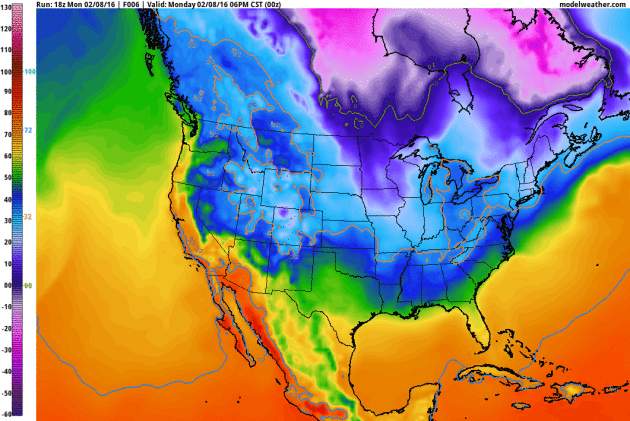

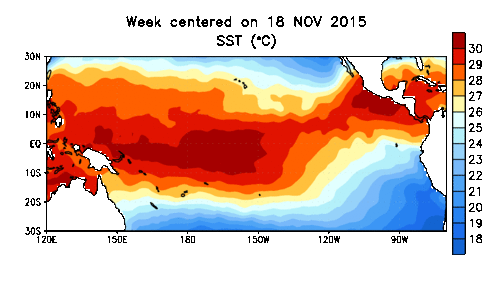
Animation credit: NOAA Climate Prediction Center.

Sea Surface Temperature Anomalies: earth.nullschool.net
Drought Remains "Very Serious" in California. Recent rains and heavy snows are putting a dent in the drought, but the long term implications are still uncertain. Here's a clip from Capital Public Radio: "...January brought above-average precipitation to California, but the narrative says more is needed to end the state’s historic four-year drought. "Despite heavy rainfall in January, an above-average snowpack and rising reservoirs in many areas, the California State Water Resources Control Board recently approved an 8-month extension of existing drought-related emergency regulations," the report says. "This is a reminder that although El Niño-related precipitation has been bountiful so far this winter, the drought situation in California remains very serious..."
Photo credit above: "The
second snowpack measurement of the winter Feb. 2 was 130 percent of
average at Phillips Station off Highway 50 near Sierra-at-Tahoe Road." California Department of Water Resources / Courtesy.
How Melting Arctic Ice May Have Set Off Era of Vicious East Coast Snow Storms. Jason Samenow connects the dots at Capital Weather Gang; here's a clip: "...Cohen, who works at Atmospheric and Environmental Research, Inc., has developed and published research that support a connection between declining Arctic ice and more severe East Coast storms. Cohen says the melting ice, which peaks in the early fall, sets off a chain reaction that establishes “a great atmospheric background for a blockbuster snowstorm” by winter. Here’s how it works…When sea ice melts, Cohen says, cold winds blowing over open waters in the Arctic pick up moisture which gets deposited as snow over Eurasia in October. The process is similar to how lake effect snow forms in the Great Lakes...."
Image credit: "2015 September Arctic sea extent compared to 1981-2000 average portrayed by yellow line." (NASA).
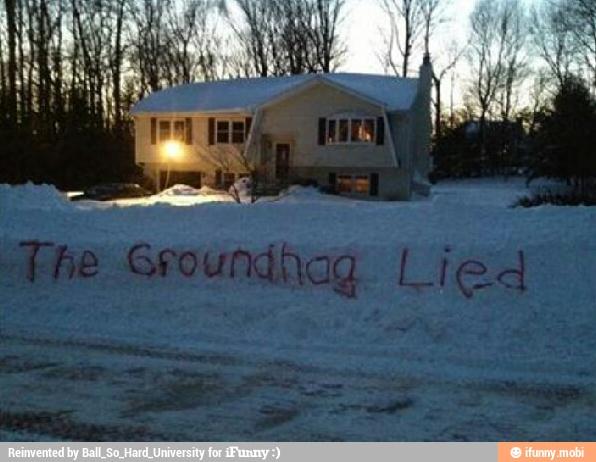
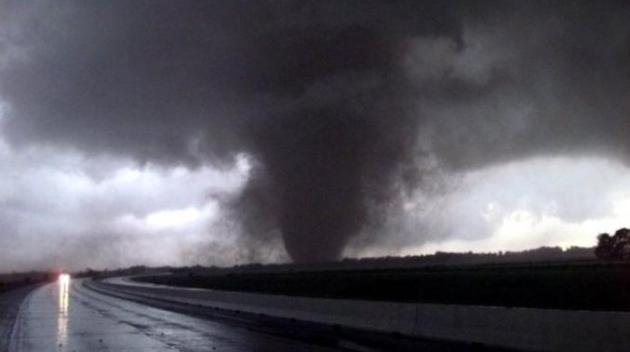

Image credit above: "An artist's rendering of the interior of the R.W. Kern Center on the campus of Hampshire College in Amherst, Mass. The 17,000-square-foot center will host high-tech classrooms, admissions and financial aid offices, and social space. It will be only the ninth building certified as self-sustaining in the United States." Courtesy of Hampshire College.
Image credit: "Converting CO2 from the air to methanol would not only help reduce the atmospheric concentration of this greenhouse gas, but also provide clean burning fuel in the process." (Credit: Surya Prakash)
Cover Crops, a Farming Revolution With Deep Roots in the Past. Not only does in help to sequester carbon in the soil, it can make fields more resilient to drought and flood. Here's an excerpt from The New York Times: "...But Doug didn’t become a believer until 2013, when the family was grappling with a terrible drought. “In the part of a field where we had planted cover crops, we were getting 20 to 25 bushels of corn more per acre than in places where no cover crops had been planted,” he said. “That showed me it made financial sense to do this.” Now some 13,000 of the 20,000 acres that the family farms across nine counties are planted with cover crops after harvesting, and farmers around them are beginning to embrace the practice..."
Photo credit above: "Dan DeSutter, in a field of dried-up daikon radish, sunflower, turnip and hairy vetch, has been experimenting with cover crops for 15 years." Credit David Kasnic for The New York Times.
Has The U.S. Really Reached an Epic Turning Point in Energy? National Geographic asks the question; here's an excerpt: "...Indeed, in recent years, the U.S. oil and natural gas boom has sparked much talk about an American energy renaissance. Yet as prices for oil, wind and solar have plunged, the most recent U.S. short-term forecast doesn’t see production growth for all three. Rather, it sees oil falling for the next two years but solar and wind rising. What this means is an energy mix in the world’s largest economy that’s increasingly efficient and clean with fewer heat-trapping carbon emissions..."
Photo credit: "The United States is seeing a surge in wind energy. Here, turbines spin at the Horse Hollow Wind Energy Center in Texas." Photograph by Joe McNally, National Geographic.
Photo credit: "Library of Congress rotunda clock." (Photo: Library of Congress).


TODAY: Some sun, cold and crispy. Wind chill: -15 early. Winds: NW 15-25. High: 11
TUESDAY NIGHT: Clear and nippy. Low: -4
WEDNESDAY: Plenty of bright, ineffective sun. Winds: NW 8-13. High: 9
THURSDAY: Fading sun, still chilly. Winds: S 5-10. Wake-up: 0. High: 14
FRIDAY: Next shot, coating of light snow? Winds: NW 10-20. Wake-up: 8. High: 15
SATURDAY: Cold-blue sky, light winds. Winds: NW 5-10. Wake-up: -8. High: 10
SUNDAY: Chance of light snow, "milder". Winds: SE 8-13. Wake-up: 2. High: 22
MONDAY: Mostly cloudy, above average again. Grilling weather. Wake-up: 18. High: near 30
Climate Stories...
The Pentagon Just Issued Marching Orders on Climate Change. Here's the intro to an update from VICE News: "A bit over a year after identifying climate change as a "significant challenge" for the US military, the US Department of Defense has given its top officials orders for handling the hazards posed by a warming world. The boring-but-important 12-page document issued in January tells the armed service chiefs and top civilian officials to identify how climate change will affect their missions, figure out how to manage any risks it poses, and factor those into their planning. It gives specific tasks to various Defense Department offices and regional commands, from determining how higher sea levels or longer droughts affect US bases to what new gear might be needed to work in a thawing Arctic..."
Sea Level Rise Will Last Twice as Long as Human History. Here's the intro to a story at Newsweek: "Huge sea-level rises caused by climate change will last far longer than the entire history of human civilization to date, according to new research, unless the brief window of opportunity of the next few decades is used to cut carbon emissions drastically. Even if global warming is capped at governments’ target of 2 degrees Celsius — which is already seen as difficult — 20 percent of the world’s population will eventually have to migrate away from coasts swamped by rising oceans. Cities including New York, London, Rio de Janeiro, Cairo, Calcutta, Jakarta and Shanghai would all be submerged..."
Graphic credit: Guardian, source: Nature Climate Change.
Photo credit: Suisse/Flickr.
Study Points to Developing World Feeling More Impact from Climate Change. Here's the intro to a story at CSMonitor.com: "A
study released Friday shows that the wealthiest 4 percent of the
world’s population is creating 50 percent of the greenhouse gas
emissions, but will likely suffer little impact resulting from climate
change, such as increased frequency of natural disasters, changing
habitats, human health impacts, and industry stress. The study,
generated by the Wildlife Conservation Society, likens greenhouse gas emissions from countries such as the United States and China to “second-hand smoke..."
Photo credit above: "In
this 2014 file photo, smoke billows out of a chimney stack of steel
works factories in Port Kembla, south of Sydney, Australia." Rob Griffith/AP/File.
Climate Talk in Alexandia. I
want to thank Reverend John Riggle and some very dedicated volunteers
for arranging a presentation to local pastors and a public talk in the
Alexandria area on Saturday. I had a chance to review meteorological and
climate trends, and talk about faith, stewardship and Creation Care.
Photo above courtesy of the Alexandria Echo Press, which has details here.
Greetings from Alexandria.
I had enough time to see Big Ole and take a quick tour of the
Kensington Rune Stone, which dates back to 1362. Yes, there's compelling
evidence that the Vikings were here long before Christopher Columbus
got close, and yet professional skeptics remain. Sound familiar?

T-Shirt Weather in the Arctic. The changes are happening even faster at more northerly latitude; here's an excerpt of an Op-Ed at The New York Times: "...Thunderstorms
also raged over our camp. These storms used to be rare in the Arctic,
but they strike often now. Lightning has set fire to the tundra,
releasing into the atmosphere huge stores of ancient carbon from the
permafrost. Sinkholes are also opening up in the thawing tundra. Walk up
to one, and you will hear the trickle and clatter as heat dissolves
permafrost into cascades of ice age mud and stones. We are only just
beginning to understand these changes. Ecosystems involve a complex web
of connections among species and the physical environment. Climate
change alters these connections in ways that can surprise and baffle us..."
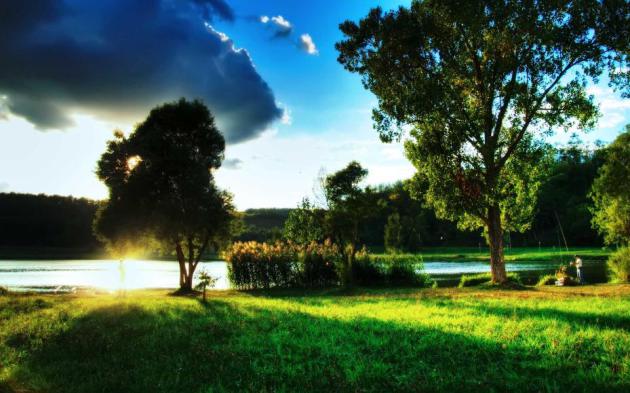
Some Trees May Slow Climate Change Better Than Others. Who knew? Here's the intro to a story at AOL.com: "Planting
trees to help fight climate-change works, right? Well, according to a
new study that's not always the case. It turns out that conifer trees,
like evergreens, may actually cause temperature increases where they've
taken root in place of broad-leafed trees. For example, look at Europe
where the study was focused..."
No comments:
Post a Comment